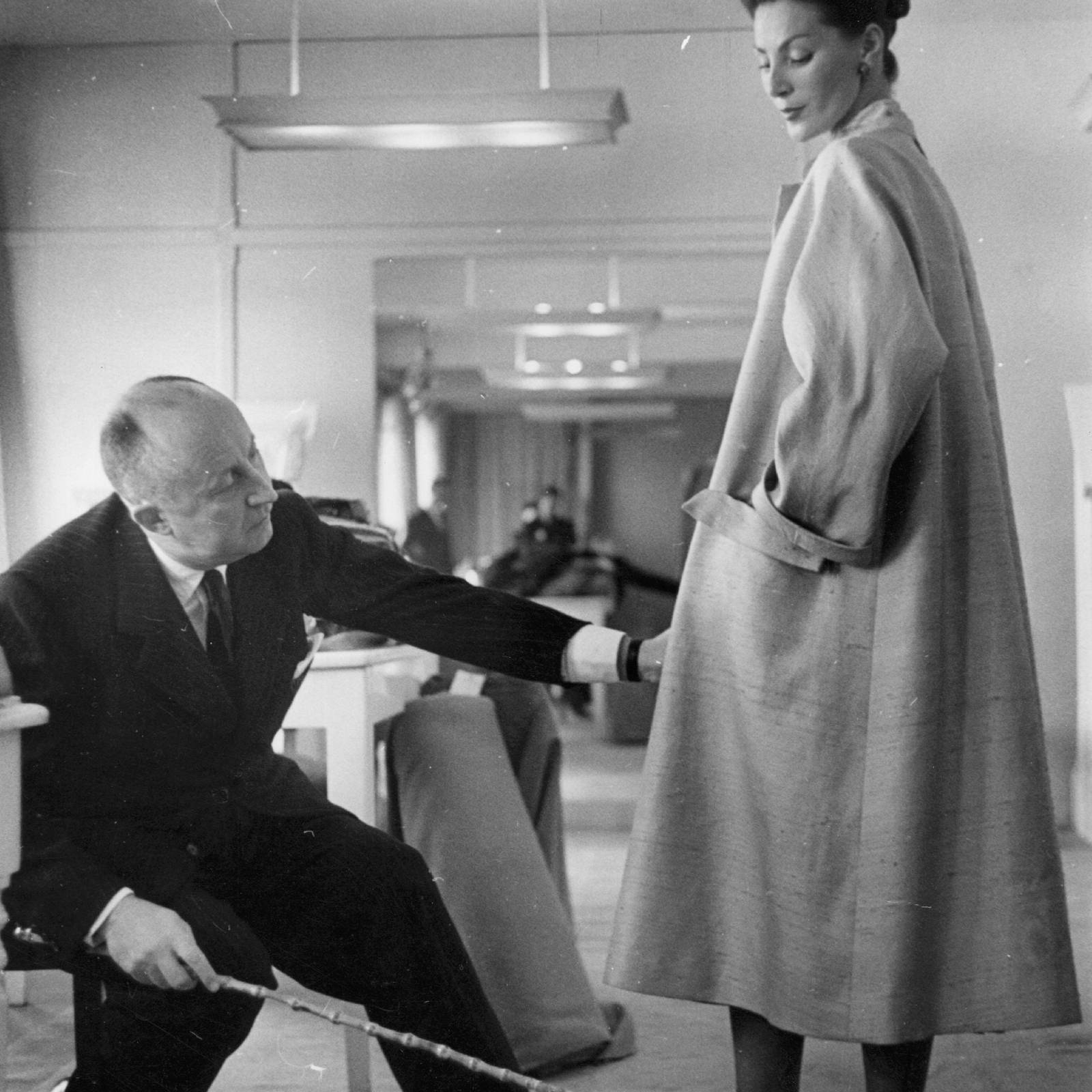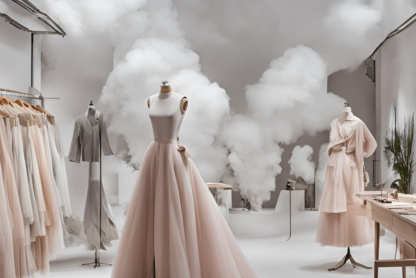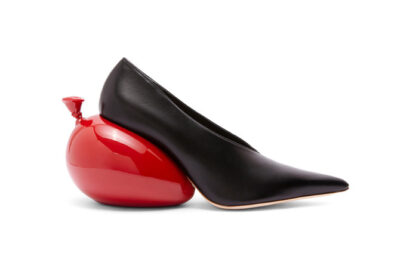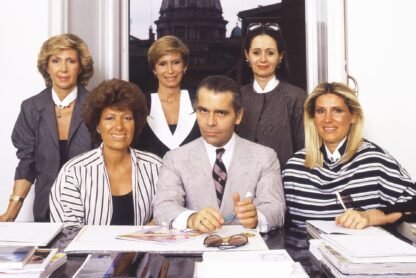Christian Dior founded one of the world’s leading Couture houses. Many want to feel part of the Dior world. Whether it’s through its timeless products or like in the case of many of my students – working at the brand.
On the occasion of the founder’s approaching birthday on January 21, let’s (re)discover the complete history of Christian Dior. The origins, creative directors through the years, and iconic pieces.
The History of Christian Dior
Early years of Christian Dior
Christian Dior was born in 1905 in Granville, a small town in the region of Normandy, France. Dior grew up in a considerably wealthy family; his father was a prosperous fertilizer manufacturer who had his own business. He was the second of five children. In 1910, the family moved to Paris.
In his early years, Christian Dior was passionate about the art world. During the 1920s, he frequented the cultural scene in Paris. He made friends with artists and sold his sketches around the streets of Paris to make some pocket money. Sadly, his parents had hopes of him becoming a diplomat. So, he enrolled at the prestigious École des Sciences Politiques to undertake an education in political science in 1925. Can you imagine if he would have pursued this path instead, and the world would be left without the house of Christian Dior?
Upon leaving school, Dior was still an ambitious dreamer and decided to follow his devotion to art. In 1928, he opened an art gallery with his friend Jacques Bonjean at 34 rue La Boétie. They hosted works of acclaimed artists – some of whom they personally knew: Picasso, Dali, Braque, Matisse, Dufy, and more. In 1932, he opened another gallery at 29 rue Cambacérès with Pierre Colle.
The Dior Dark Phase
Faced with unimaginable challenges of the arrival of the great depression, the tragic death of both his brother and mother, and the collapse of his father’s business, Dior went through a dark time but chose to continue and find hope. Which led him to his first-ever steps into the fashion industry.
In 1935, Christian Dior began selling his drawings to milliners and couture houses. It includes Jean Patou, Schiaparelli, Maggy Rouff, Worth, Balenciaga, Molyneux, and Paquin. He also worked as a fashion illustrator for Le Figaro newspaper and Jardin des Modes magazine.
In 1938, Robert Piguet invited Dior to work for him as a house designer. However, his work was paused as he had to do military service between 1939 and 1940.
Then, from 1941 to 1946, he was working as a designer for Lucien Lelong. Here, he learned the ins and outs of the Couture industry alongside his colleague Pierre Balmain.
The birth of the Maison Christian Dior
Backed by an industrialist, Marcel Boussac, Christian Dior founded his namesake house on December 16, 1946. It was at 30 Avenue Montaigne Paris, with three ateliers and a staff of 85 people.
Famous creations of Christian Dior
Dior’s New Look
On February 12, 1947, Christian Dior unveiled his debut Spring-Summer 1947 collection at his salons at 30, Avenue Montaigne. The collection comprised 90 looks, the most iconic being the New Look.
The Spring-Summer 1947 collection featured two lines. The lines are called “Corolle” and “En Huit” but went down in fashion history as “The New Look”. It was Carmel Snow, then editor-in-chief of Harper’s Bazaar who coined the term. She was the first to rush backstage to congratulate Monsieur Dior on his debut show. Also, she said a sentence that inspired the name “New Look”: “It’s quite a revolution, dear Christian! Your dresses have such a new look.”
Showcasing at the end of World War 2, Monsieur Dior’s New Look was groundbreaking and much ahead of its time. The fashion world had never seen such elaborate designs, using an abundance of fabric. It was indeed odd to see so much fabric during the severe rationing that the country was still facing after the war, causing some backlash from critics.
Nonetheless, Christian Dior was driven by a dream. He wanted to celebrate life after the war and embrace women’s beauty and feminity. He encouraged them to feel joy and dress extravagantly again. His New Look was in sharp contrast with the utility fashion during the 1940s. He was marking a new departure for women’s fashion.
Dior Bar Jacket
A central piece from Christian Dior’s debut New Look collection was the Bar Suit. It helped achieve the cinched-waisted silhouette that became so famous.
Fun fact: The Bar jacket took its name from the bar at the Plaza Athénée in Paris, frequented by Christian Dior himself.
Dior’s Bar Jacket has been the house’s signature piece since day one and the founder constantly strived to perfect it. The Bar Jacket was presented in various versions in almost all of the 22 couture collections he designed until his sudden death in 1957.
Since then, the Bar Jacket has been reinterpreted by other Maison’s creative directors. You can read about the evolution of this iconic piece in this article.
Miss Dior
In 1947, Christian Dior launched his first-ever perfume, “Miss Dior” – the same year as his debut “New Look” collection.
Christian Dior named the perfume after his sister Catherine Dior. The idea came to the designer’s muse, Mitzah Bricard when she saw Catherine arrive at the atelier one day, and said, “Look, there’s Miss Dior”. At that moment, the designer realized that the fragrance was meant to be called Miss Dior. He instructed perfumers Paul Vacher and Jean Carles to “make [him] a fragrance that smells like love.”
The first bottle was sold on 1 December 1947 and gained instant popularity. Monsieur Dior considered Miss Dior the ultimate accessory, the final touch to a look and constructed it with the same precision as his evening gowns. “I feel as much a Couturier as a Perfumer,” he once famously said.
Dior’s next perfume, Diorama, was launched in 1949, followed by Diorissimo in 1956.
The first Christian Dior store abroad
Following a successful debut in Paris, in 1948, Christian Dior expanded internationally, opening his first boutique in New York’s Fifth Avenue with an exclusive collection of luxury ready-to-wear and accessories created on the premises. Christian Dior Perfumes New York Inc. was launched the same year.
In 1952, the brand opened a store in London.
The death of Christian Dior
On October 24, 1957, Christian Dior died of a heart attack while taking a trip to his spa clinic in Montecatini Terme in Italy. The legendary couturier who was seen as the saviour of Parisian post-war couture was mourned by the fashion world. Many people attended his funeral, including famous designers Cristobal Balenciaga, Pierre Balmain, and Hubert de Givenchy.
After the sudden death of Christian Dior, Yves Saint Laurent was named his successor. Curious to know how he landed such a prestigious role?
Dior Creative directors through the years
Dior under Yves Saint Laurent: 1957-1960
Yves Saint Laurent began working as an apprentice at Christian Dior in 1955. He was first promoted to the role of assistant with Marc Bohan and Guy Douvier. Then, as principal associate, working directly alongside the founder. Having gained his mentor’s trust and admiration, Saint Laurent found his designs included in every collection and all Dior’s bi-annual shows from as early as July 1955 – only a few months after he joined the house. At the Maison’s 10th anniversary in July 1957, Christian Dior confessed to Time magazine that from 180 designs in his last collection, 34 belonged to Yves Saint Laurent.
When his mother visited him in Paris in 1957, Christian Dior confided that Saint Laurent would be the one to succeed him. It happened sooner than expected. Dior died of a heart attack later that year, and Saint Laurent became the youngest creative director to ever lead the French fashion house – at 21 years!
Spring 1958 Trapèze Collection
Yves Saint Laurent made his debut as Dior’s creative director on January 30, 1958. It was with the Spring 1958 Trapèze collection. He completed it in only 15 days with 600 original sketches transforming into 178 looks. The youthful line was nothing like the New Look but his risk paid off: the Trapèze collection received immense success. It is credited for saving the house from financial ruin and laid a promising future for the Maison. The headlines around the world claimed Saint Laurent “has saved France”.
For his next few collections for Dior, Yves Saint Laurent kept following his instincts and introduced more youthful designs that those of his predecessor. However, his Beat collection of 1960, produced entirely of black clothes that included motorcycle jackets and turtleneck cashmere sweaters were greeted with astonishment.
Soon, the couturier found himself conscripted to serve in the French Army during the Algerian War of Independence. After 20 days, he was admitted to a military hospital, where he received unexpected news that he was already no longer expected at Dior (probably because of the last unsuccessful collection.) Saint Laurent sued the brand for breach of contract, won the trial, and started his eponymous label with his longtime business partner Pierre Bergé in 1961. And the rest is history.
Dior under Marc Bohan: 1960 – 1989
The house’s new creative director was Marc Bohan, another of Christian Dior’s protégés. Having joined the House of Dior in 1958 as creative director of the London subsidiary, in 1960, he transferred to Paris.
Like Yves Saint Laurent, Marc Bohan is also considered saving the Dior, having launched the first ready-to-wear line “Miss Dior” in 1967 (entrusting it to Philippe Guibourgé,) Baby Dior (the store was inaugured by Princess Grace Kelly of Monaco,) and Dior Monsieur (later renamed Dior Homme) in 1969.
Fascinated by modern and simple yet elegant styles, Bohan introduced the Slim Look, a style embraced by many Hollywood stars, for which he is known as a more conservatoire creative director in the history of Dior.
Marc Bohan is also responsible for creating the iconic Dior Oblique pattern in 1967, which was first revealed in the Spring/Summer 1969, appearing on one of the bags from the Haute Couture collection. Later, the Dior Oblique canvas adorned the house’s luggage collection in 1971 and was used to decorate the Dior Monsieur boutique in September 1974.
Finally, Marc Bohan grew Dior’s perfume business. In 1968, he created a first connection with Moët-Hennessy (now LVMH) which bought Dior Parfums, and introduced Poison in 1985 – another Dior’s mythical perfume.
Dior under Gianfranco Ferré: 1989 – 1996
In 1989, Dior welcomed Gianfranco Ferré, an Italian couturier who paid homage to the house’s signature styles with fitted silhouettes and couture opulence. The large bows was one of the classic Ferré’s codes.
During his time at Dior, Gianfranco Ferré launched one of the most iconic pieces: the Lady Dior bag.
The history of Lady Dior
In 1994, Gianfranco Ferré first unveiled “Chouchou” (meaning “favorite” in French) – the design that would later be recognized as the Lady Dior. The distinct Cannage motif was inspired by the Napoleon III chairs Christian Dior used in his first show in 1947. Each bag is adorned with delicate “Dior” lucky charms, recalling those that Monsieur Dior, passionate about astrology, carried everywhere with him.
In September 1995, Bernadette Chirac, the First Lady of France gifted the bag to Princess Diana when they met at the Cézanne Art Exhibition at the Grand Palais in Paris, and it became one of her favorite bags. During an official visit to Argentina in November of the same year, the Princess appeared carrying the bag as she got off the plane in Buenos Aires. The scene was immortalized in an iconic photo that immediately circulated the world.
Princess Diana loved the gesture so much that she contacted Dior to order it in every color and wore it on many occasions. Her appearance at the Met Gala 1996 is one of the most memorable in history; she carried the mini Lady Dior, which had been created especially for her in blue satin to match her dress. It was official: the bag had found its brand ambassador. And so, the Maison decided to rename it “Lady Dior” in Princess Diana’s honor, matching her nickname, “Lady Di”.
Dior under John Galliano: 1996 – 2012
Suggested to LVMH Chairman Bernard Arnault by Anna Wintour, John Galliano became the brand’s first British creative director. Galliano revolutionized Dior with his rock ’n’ roll spirit, spectacular scenography in each of his shows, and new iconic releases, including the Saddle Bag and the J’Adore Dior perfume.
The Dior Saddle Bag
John Galliano introduced the Dior Saddle bag in his Spring Summer 2000 ready-to-wear show and a campaign starring Gisele Bündchen and Rhea Durham, shot by Nick Knight. It was the first bag Galliano ever created for the Christian Dior house.
As its name suggests, the bag’s shape reminds of a horse’s saddle, inspired by the equestrian style. Galliano created the bag with the gilded “D” charm in various colors and prints. Also, it includes Dior’s iconic Oblique pattern, and the house’s now rare newspaper print.
The Dior Saddle was undoubtedly the it bag of the first half of the 2000s. Largely thanks to the popular TV show Sex and the City where it made an appearance. The iconic accessory got suspended in 2007 and relaunched in 2014.
Dior J’Adore
The iconic Dior J’Adore perfume was also created during John Galliano’s tenure at the house. Launched in 1999 by perfumer Calice Becker, Dior J’Adore’s fresh, floral scent signaled a return to Dior’s more elegant roots since the launch of the strong and sweet fragrance Poison in 1985. Supposedly, this is how Calice Becker imagined gold itself would smell.
The design of the bottle is interesting for mimicking the feminine silhouette and was conceived by jewelry and furniture artist-designer Hervé Van der Staaten.
J’Adore’s ad campaigns are perhaps as popular as the fragrance itself. The first was fronted by Estonian model Carmen Kass, followed by Charlize Theron since 2004, and recently Rihanna – the latest ambassadoe.
Among other highlights during Galliano’s tenure at Dior was the launch of Dior Joaillerie in 1998, with Victoire de Castellane named creative director.
In 2011, John Galliano was fired from Dior due to his public anti-Semitic statements, without even being able to see his latest collection on the runway. Bill Gaytten was hired during the transition period, presenting the next four collections.
During Galliano’s tenure, the brand welcomed in 2000 Hedi Slimane, Creative Director of Christian Dior Monsieur who renamed it Dior Homme. In 2007, he was succeeded by Kris Van Assche.
Dior under Raf Simons: 2012 – 2015
When the Belgian designer Raf Simons arrived at Dior, he had big goals for the brand. “The Chanel woman? I don’t even need to see, I smell her from round the corner, but I don’t recognize the Dior woman,” he told Vogue UK in 2012, shortly after his debut collection.
Raf Simons’ first collection for the brand – Haute Couture Fall 2012 – was received with applause and was the subject of a critically acclaimed documentary “Dior and I”. Simons received even more credit for his debut show because it was his first-ever couture collection, and he designed it in just 8 weeks! A haute couture collection usually takes 6 to 8 months to make. Composed of 54 looks, Dior’s Haute Couture Fall 2012 collection offered a very modern reinterpretation of the founder’s Christian Dior iconic New Look with an hourglass silhouette with the bar jacket and full skirts.
Raf Simons’ avant-gardist spirit set the course for the rest of his career at Dior. His experimentation with color, using a bold combination of eclectic shades, the revival in Spring 2013 of the comma heel, first introduced by Roger Vivier for Dior in the 1950s, and the launch of the couture “Fusion” sneaker during the Couture 2014 Spring catwalk are just a few examples of his renowned work he did at Dior. He left the brand in 2015 for personal reasons, and was temporarily replaced by Serge Ruffieux and Lucie Meier.
Dior under Maria Grazia Chiuri: 2016 – Present
In 2016, Maria Grazia Chiuri became Dior’s first female creative director. Since her arrival at the brand, she has placed women at the center through empowering messages in her collections. Her debut collection for Spring/Summer 2017 featured the now-iconic T-shirt emblazoned with the phrase “We Should All Be Feminists,” inspired by Chimamanda Ngozi Adichie’s essay. Also, the launch in 2017 of Women@Dior, an international mentoring and education program. Moreover, an exhibition in 2023 at La Gallerie Dior in Paris dedicated to women artisans who collaborate with the brand.

Moreover, Maria Grazia Chiuri has emphasized the importance of preserving craftsmanship in modern fashion through collaborations with artisans and craftspeople from around the world.
Also, she relaunched and modernized the Dior Saddle bag in 2018 and the Bar jacket. These are timeless icons and revisited places cherished by the founder like Mexico and Scotland, staging the Cruise 2024 and 2025 shows there.
During Chiuri’s tenure, in March 2018, Kim Jones was named Creative Director of Dior men’s collections.
Now, what’s the next chapter for Dior? Amid many changes in creative directions last year, rumour also has it that Jonathan Anderson might be heading to Dior and replace Maria Grazia Chiuri. Stay tuned and follow us on Instagram!







